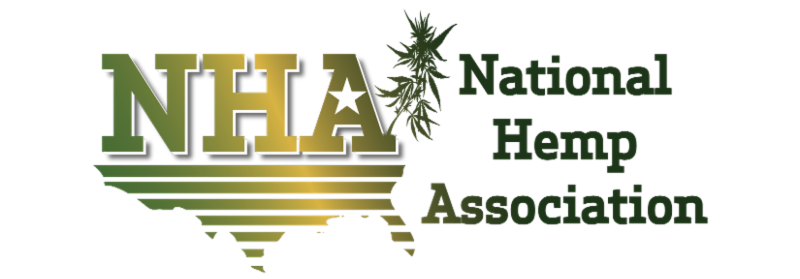Are the People and Public who are being exposed to the Nuclear Radiation in Bridgeton MO part of a Human Experiment just like what happened in Cincinnati OH long ago?The similarities sound eerily familiar the first one is being poor. The second one is how the area residents are treated ie: Ferguson. Too many similarities for me not to connect the Dots.
Cincinnati Radiation Experiment
Cancer patients (mostly Negroes of below-average intelligence who were charity patients) during 1960-72 in Cincinnati were exposed to large doses of whole body radiation as part of an experiment sponsored by the U.S. military.Cincinnati radiation experiments
Cancer patients (mostly Negroes of below-average intelligence who were charity patients) during 1960-72 in Cincinnati were exposed to large doses of whole body radiation as part of an experiment sponsored by the U.S. military. None of the subjects gave informed consent, they thought they were receiving treatment for their cancer. Subjects experienced nausea and vomiting from acute radiation sickness, pain from burns on their bodies, and some died prematurely as result of radiation exposure. In re Cincinnati Radiation Litigation, 874 F.Supp. 796 (S.D.Ohio 1995). On 5 May 1999, a settlement was announced in which the defendants paid US$ 5.4×106, but defendants admitted no wrongdoing.
government-sponsored – “…What happened here is one of the worst things this government has ever done to its citizens in secret,” Dr. Egilman said. Martha Stephens, now an emeritus professor of English at the University of Cincinnati, helped bring the research to light in the early 1970s and wrote a book about it. She said documents showed that many of the patients had received radiation doses that reduced their white blood cell counts to nearly nothing. At one time, Dr. Saenger said the deaths of eight patients had been caused by radiation, but later he said that none had been caused by it. In 1994, when government-sponsored radiation experiments that had been conducted during the cold war attracted renewed attention, the Cincinnati study came under new scrutiny, and a graduate student working with Professor Stephens began tracking down the families of the patients…” (Eugene Saenger,Controversial Doctor, Dies at 90)
the effect full-body radiation exposure – “…Dr. Stephens began pestering administrators at the medical school for information about the radiation experiments. The more she learned, the more frightened she became. The more frightened, the more she dug. She spent much of 1971 and 1972 digging. She discovered the aim of the secret study was to determine the effect full-body radiation exposure, such as from a nuclear blast, would have on soldiers in combat. But the cancer patients who were subjected to the experiment were not told they were being exposed to deadly doses of radiation. Their doctors told them they were being treated to relieve the pain of their cancers. “As a person teaching at a public university, I wanted to earn my pay. I felt the citizens of the state who were paying my salary wanted me to defend their interest against what was happening on my campus,” she says. “If Ohio citizens were being abused on my campus, I needed to make it known and not wait for outsiders to tell us we were not treating people right…” (Book revisits UC radiation experiments).
consent forms – “…Throughout most of the study, consent forms were not signed. Later, when consent forms were used, many victims claimed they had been duped or had their signatures forged. According to a report by a University of Cincinnati Faculty Committee sent to the Pentagon, “physicians, nurses, technicians, and ward personnel were instructed not to discuss post-irradiation symptoms or reactions with the patients” which included “the risk of death from bone marrow failure within 40 days.” The “treatment” received by UC “patients” is hardly an anomaly. Radiation research was systematic and widespread; the implications well discussed and understood. In fact the national security archives now has reams of declassified documents on various human radiation experiments often conducted on unwitting subjects by numerous government departments. Nor were the doctors involved unclear as to what they were doing. In the 1950s, Shields Warren, then director of the Atomic Energy Commission’s Division of Biology and Medicine, received a memo from Joseph Hamilton— the scientist in charge of radiation experiments at the University of California— advising that large primates be used instead of humans in the upcoming studies on radiation’s cognitive effects, of which Dr. Saenger’s study was one. The memo explained that the use of humans could leave the AEC open “to considerable criticism,” as the experiments had “a little of the Buchenwald touch.” Disregarding this advice, the experiments continued as planned, coast-to-coast, with varying degrees of deadliness. In the early 1980s Dr. David Egilman and Geoffrey Sea— health consultants for the Oil, Chemical, and Atomic Workers Union and the Federal Atomic Traders and Labor Council— investigated experiments conducted on nuclear workers and uncovered more crimes committed by the University of Cincinnati hospital. This time it was “body snatching…” (American Mengele: Human Radiation Experiments)
Human radiation experiments – Since the discovery of ionizing radiation, a number of human radiation experiments have been performed to understand the effects of ionizing radiation and radioactive contamination on the human body, specifically with the element plutonium. On January 15, 1994, President Bill Clinton formed the Advisory Committee on Human Radiation Experiments (ACHRE), chaired by Ruth Faden of the Johns Hopkins Berman Institute of Bioethics. The committee was created to investigate and report the use of human beings as test subjects in experiments involving the effects of ionizing radiation in federally funded research. The committee discovered the causes of the experiments, and reasons why the proper oversight did not exist, and made several recommendations to prevent future occurrences of similar events (Wikepedia).
RELATED READING:
- Official Web-site: xxx
- Nonconsensual Medical Experiments on Human Beings
- More Victims of Experiments Go to Bioethics Panel
- Cincinnati Radiation Experiments
- Cold War Radiation Test on Humans To Undergo a Congressional Review
- Report Research on Human Radiations Experiment Records 1944 – 1994
- People killed in radiation experiments in University of Cincinnati medical Centre 1961-71
- Roadmap to the Project
- Stop the Experimentation: An Open Letter
- The Treatment: The Story of Those Who Died in the Cincinnati Radiation Tests (Video)
- radiation and human radiation experiments
- Documentary on Early U.S. Radiation Experiments on Black Children (Video)














 The National Hemp Association sees all these challenges as ones we most overcome. That's why we are making
The National Hemp Association sees all these challenges as ones we most overcome. That's why we are making Zev Paiss, Executive Director
Zev Paiss, Executive Director
















